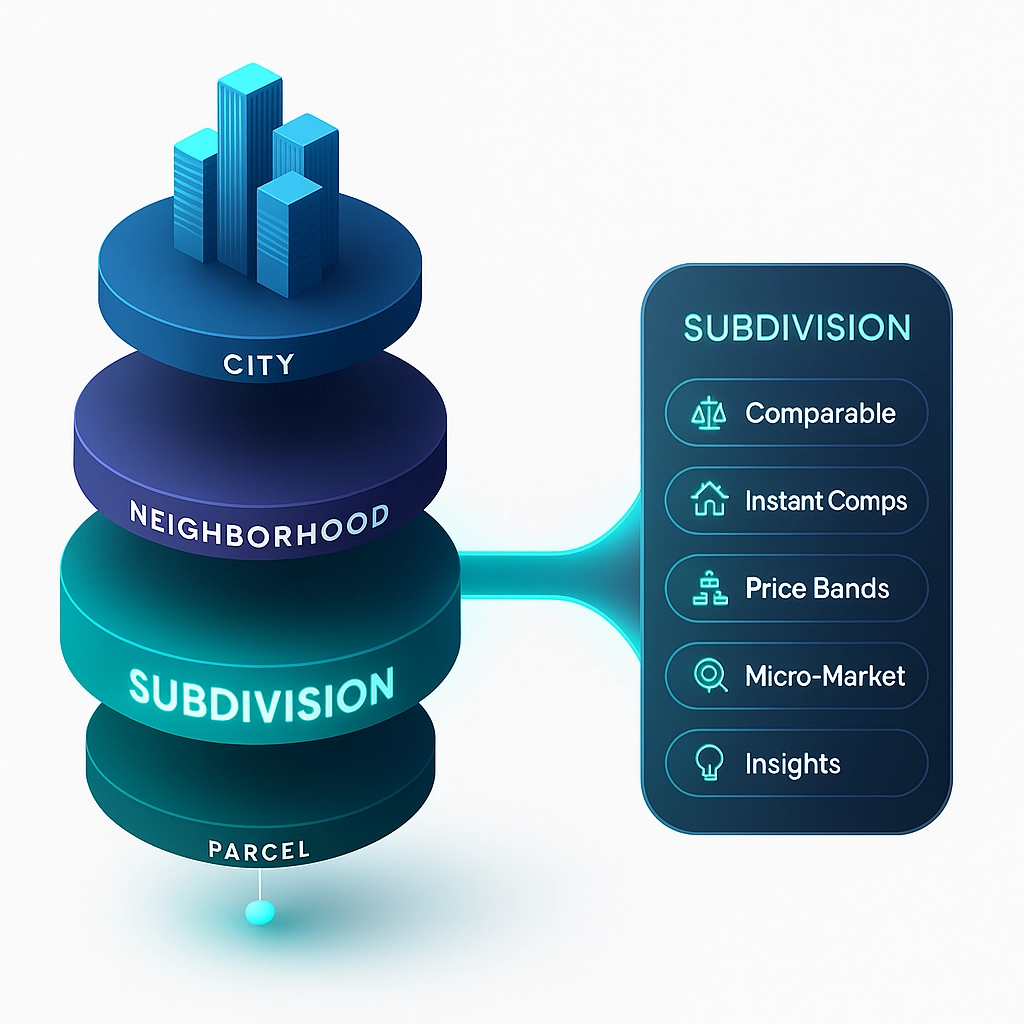Navigating the world of real estate often presents potential homeowners and investors with numerous terminologies and concepts. Two of these terms, which are sometimes used interchangeably but have distinct meanings, are "neighborhoods" and "subdivisions." Understanding the difference between the two and the unique advantages that searching by subdivisions can offer can significantly enhance one's real estate experience. This article seeks to shed light on this subject.
1. Understanding the Basics
Neighborhoods:
A neighborhood is a geographically localized community within a larger city, town, or suburb.
Neighborhoods are often characterized by similar housing types, socioeconomic demographics, or are bounded by physical barriers like streets or railways.
They are often organically formed and may have rich histories or cultural significance.
Subdivisions:
A subdivision, on the other hand, is a planned residential community.
Typically, a developer purchases a tract of land, divides it into individual lots, and then constructs homes according to a specific design or set of guidelines.
Subdivisions often have homeowners' associations (HOAs) that enforce specific rules and standards.
2. Distinct Differences
Planning and Design: While neighborhoods can evolve organically, subdivisions are meticulously planned from the onset. This means that subdivisions often have specific architectural designs, amenities, and infrastructural provisions.
Uniformity: Subdivisions often exhibit a higher degree of uniformity in terms of house designs, landscaping, and amenities. This contrasts with neighborhoods, which might have a mix of old and new homes, diverse architectural styles, and varied property sizes.
Amenities: Subdivisions frequently boast shared amenities like clubhouses, swimming pools, parks, and playgrounds. These amenities are typically maintained by the HOA and are exclusive to subdivision residents.
3. Advantages of Searching by Subdivisions for Real Estate Consumers
Predictability: The uniform nature of subdivisions provides potential buyers with a clearer expectation of what they're getting into. This can reduce the uncertainty often associated with property purchasing.
Amenities and Shared Facilities: The exclusive amenities in subdivisions can significantly enhance the living experience. They also provide social opportunities and recreational activities for residents.
Maintenance and Upkeep: With HOAs in place, subdivisions often ensure regular maintenance of communal areas, streets, and amenities. This can result in a consistently pleasant aesthetic and can potentially boost property values.
Clearer Pricing: Given the uniformity in house designs and lot sizes, pricing in subdivisions can be more straightforward. This can simplify the valuation process and negotiation.
Safety and Security: Many subdivisions come with enhanced security provisions, such as gated entries, security patrols, and surveillance systems. This can offer residents an added sense of safety.
Community Spirit: Living in a subdivision can foster a strong sense of community. Organized events, shared amenities, and the collaborative nature of HOAs can help cultivate relationships among residents.
4. Conclusion
While searching by neighborhoods offers the charm of diverse architectural styles and the allure of historical significance, searching by subdivisions presents a structured, predictable, and often amenity-rich alternative. For real estate consumers, understanding the nuances of both options can guide more informed decision-making. However, with the clear advantages of subdivisions, many buyers might find them to be a more attractive option in their home search.





Comments